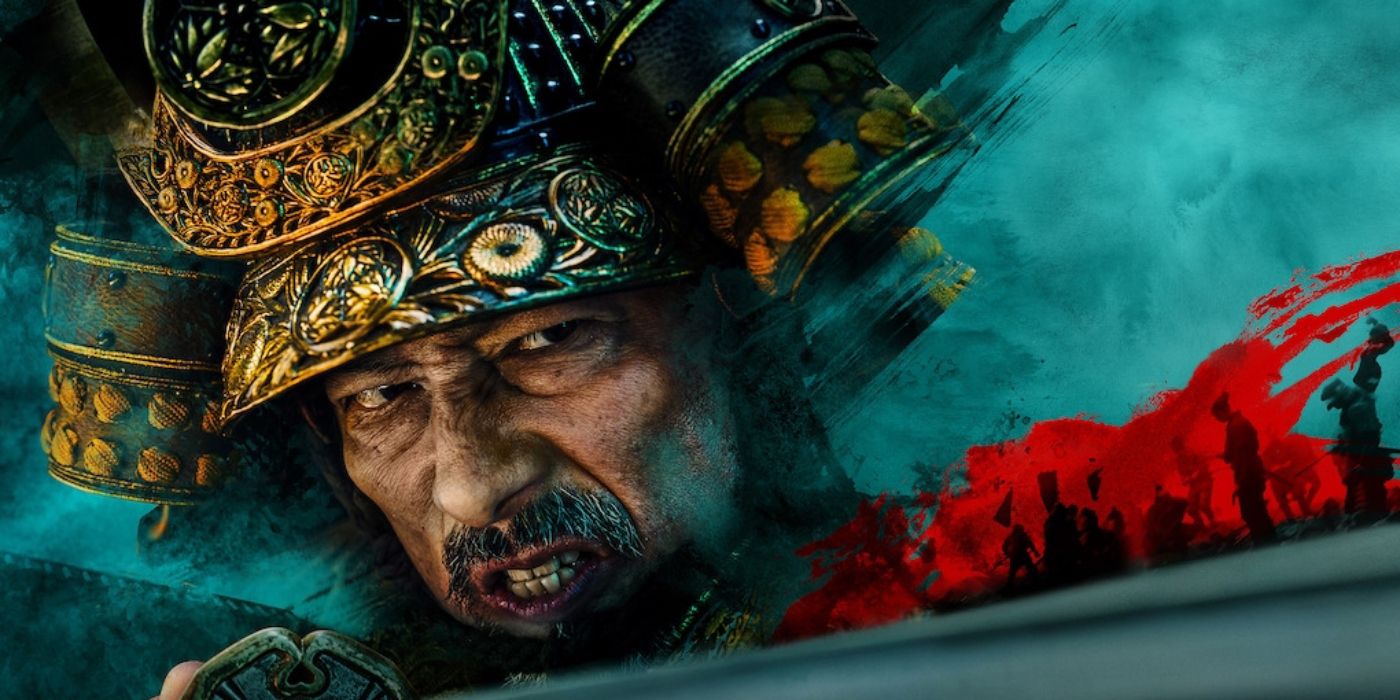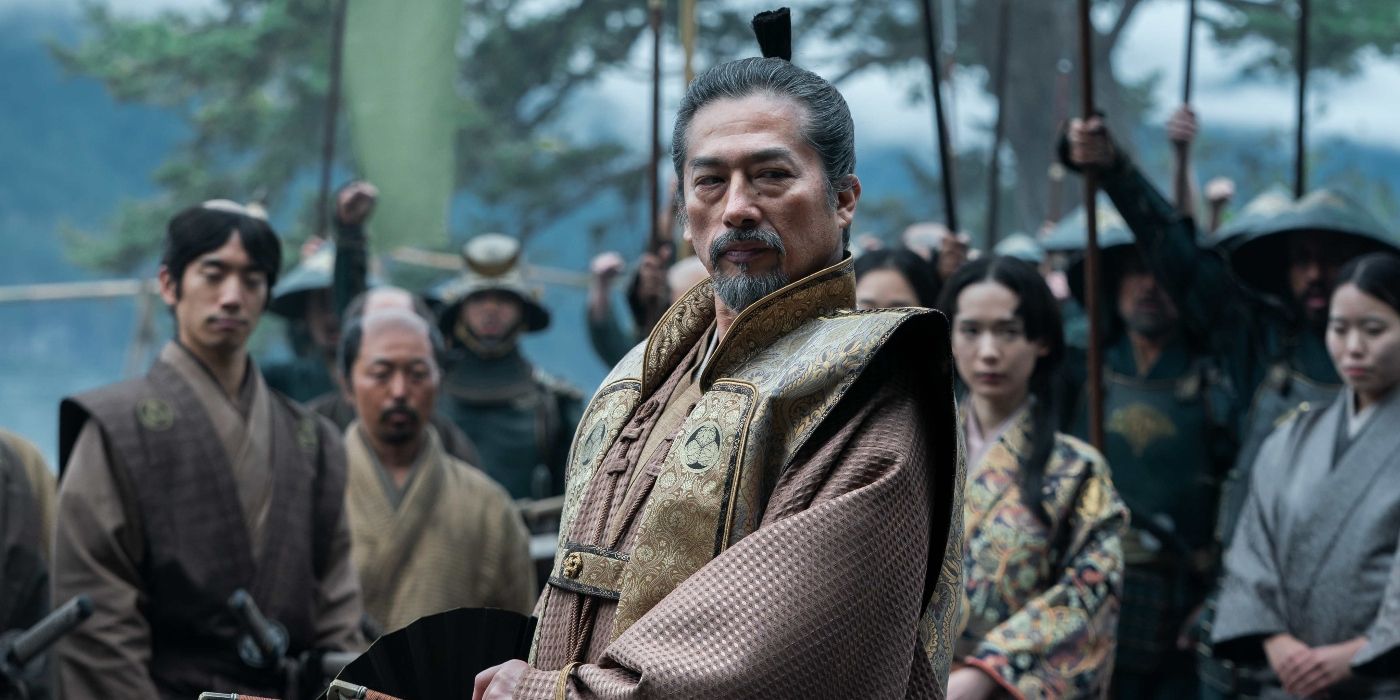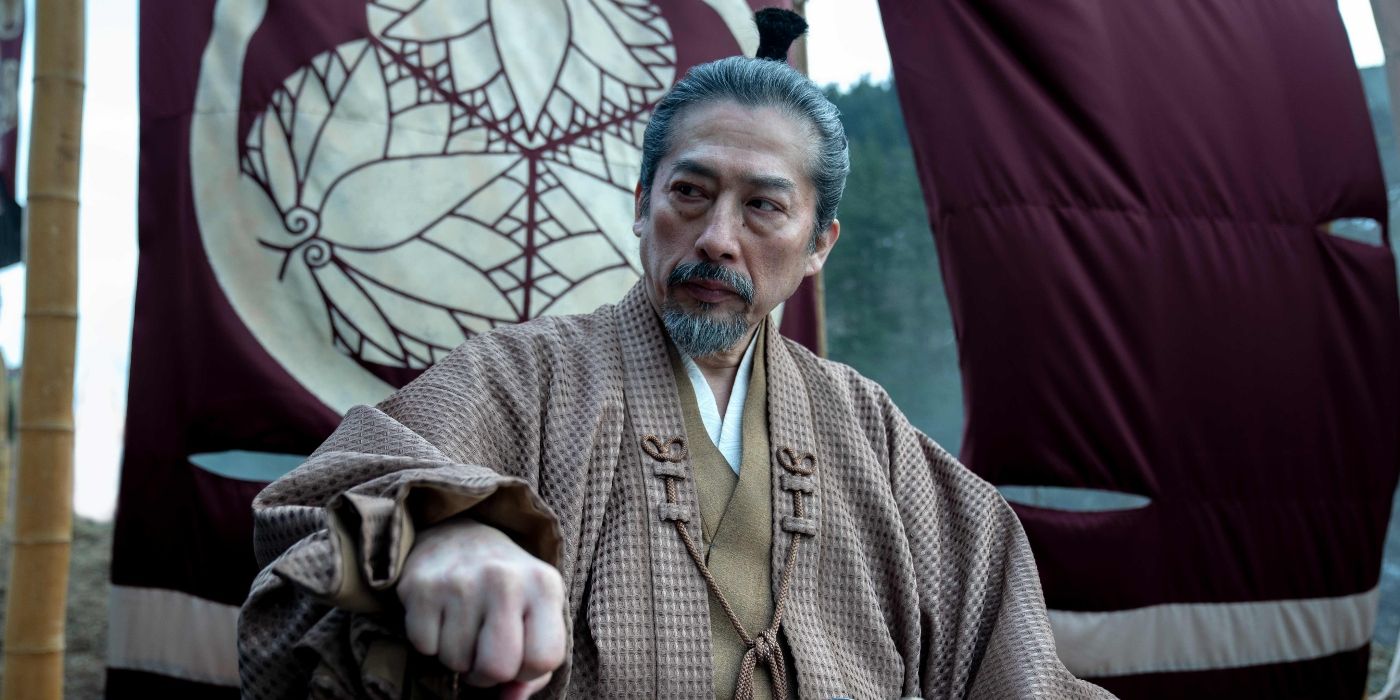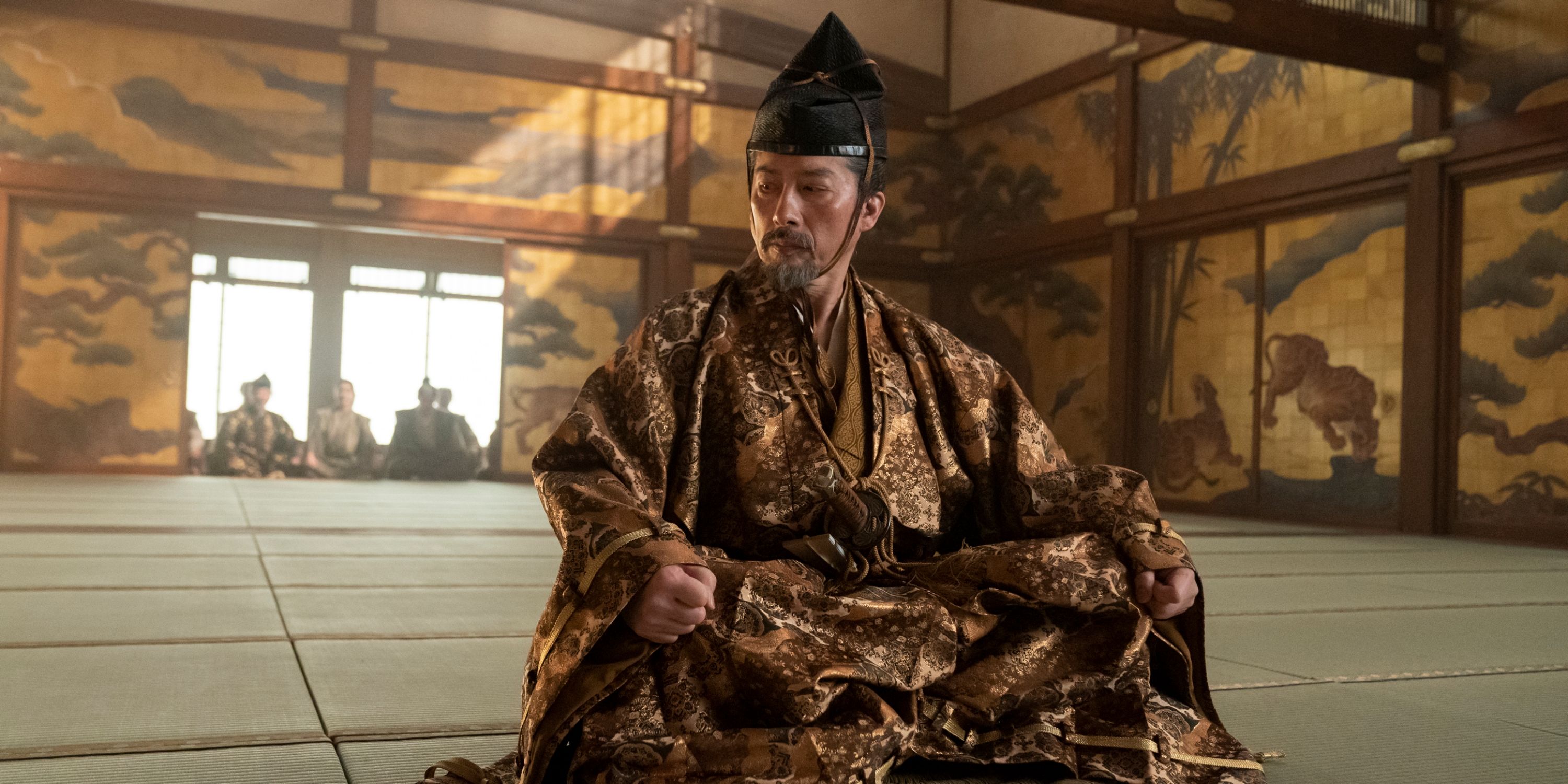
FX’s Shōgun is an undeniable hit. Adapting James Clavell‘s 1975 novel by the same name, the series tells the story of Lord Yoshii Toranaga’s (Hiroyuki Sanada) rise as Japan’s new shōgun after a period of war. Toranaga may not be the only main character, as the story is also told through the eyes of British pilot John Blackthorne (Cosmo Jarvis) and the interpreter Lady Toda Mariko (Anna Sawai), but the powerful bushō is certainly the one that intrigues viewers the most. He is based on the historical figure Tokugawa Ieyasu, one of Japan’s Great Unifiers who ushered in the Edo Period, which would last for more than two centuries. The connections between the two of them are obvious, but, deep down, Lord Toranaga and Tokugawa are very different people indeed.
Tokugawa Ieyasu’s Early Years Were Also Defined by War
This week’s episode of Shōgun, “A Stick of Time,” starts with a flashback sequence of a young Yoshii Toranaga winning his first battle. This sequence comes back throughout the episode, even becoming the subject of a joke between Toranaga and his general Toda Hiromatsu (Tokuma Nishioka), and it reveals that, although Toranaga keeps his true feelings hidden deep down, he still vividly remembers being that unprepared young warlord. It’s difficult to say whether Tokugawa Ieyasu ever felt the same way. It depends on how well and thoroughly his feelings have been documented throughout history. But Tokugawa did find himself forced to grow up at a very young age, too.
Years later, already an established ally of Oda Nobunaga, Motoyasu was given the honor of starting a new clan, and thus became Tokugawa Ieyasu, head of the Tokugawa clan. But loyalty to a leader as powerful as Nobunaga comes at a steep price. Nobunaga’s daughter and Ieyasu’s heir had gotten married in order to solidify the alliance of both clans but were eventually accused of conspiring against the Oda clan. To assert his loyalty, Tokugawa ordered the execution of his wife and ordered his own son to commit seppuku. As ruthless as this might seem, however, it’s important to note that, at that time in Japanese history, the notions of honor and loyalty were completely different, and that seppuku was seen as a way of either keeping or restoring one’s honor.
Tokugawa Ieyasu Fought Many Battles to Become Shōgun




Tokugawa Ieyasu’s alliance with Oda Nobunaga proved to be a powerful one. Nobunaga’s forces were able to conquer much of Japan, and he became known as the first of Japan’s Great Unifiers. However, there wasn’t enough time for him to conquer the rest of the territory, as a rebellion led by Akechi Mitsuhide — the father of Hosokawa Gracia, the real-life counterpart of Lady Mariko in Shōgun — trapped him in a castle, and he opted to commit seppuku instead of being slain by an enemy. Suddenly, everything that Nobunaga had accomplished in terms of unifying the country was at risk, as two of his most powerful generals, Toyotomi Hideyoshi and Tokugawa himself, were ready to go to war.
Toyotomi and Tokugawa’s conflict was a natural progression of events, as they were both powerful warlords, and power needs to be balanced. Toyotomi’s equivalent in Shōgun is the Taikō Nakamura Hidetoshi (Yukijiro Hotaru), so it’s no secret that, eventually, Toyotomi and Tokugawa put their conflict aside. Instead of continuing to wage war, Tokugawa became one of Toyotomi’s generals and took control of the Kanto region. Toyotomi is considered to be one of the first Japanese leaders to have expansionist ambitions, waging war on Korea and, according to some historians, even planning on reaching Persia. (Hiromatsu often speaks of the war in Korea in Shōgun, too.) Also, Toyotomi is the second of Japan’s Great Unifiers, mostly for keeping Tokugawa under control and preventing even more bloodshed after Oda Nobunaga’s death.
When Toyotomi died, the context is pretty much the same as seen in Shōgun. He made his vassals swear allegiance to his young son and formed a Council of Regents that would rule in his stead until the boy came of age. But, if Shōgun‘s Lord Toranaga is faithful to the Taikō’s heir, the real-life Tokugawa apparently had no intention of continuing to be anybody’s vassal. One of the members of the council himself, Tokugawa marched on Osaka and took the castle where the heir lived. This divided the council into two factions: Tokugawa’s, and another led by council member Mitsunari Ishida, whose counterpart in Shōgun is Lord Ishido Kazunari (Takehiro Ira). Tensions were high between Tokugawa and Ishida, and everything culminated in the Battle of Sekigahara. There, Tokugawa faced terrible odds and terrible weather to defeat Ishida and the loyalist army. Nevertheless, Tokugawa overcame those challenges and emerged victorious, with his direct rivals all dead. Now, he was finally shōgun.
Tokugawa Ieyasu Was Ruthless in Dealing With His Enemies
It’s important to understand that the role of shōgun didn’t necessarily come with any peaceful or democratic connotations. There was no democracy in Japan at that time, and peace was won through war. It’s a military role, and, as such, it’s mostly focused on enforcing peace rather than keeping it, and keeping the country safe from foreign threats. That’s what the Tokugawa Shogunate was about — more than 250 years of peace, but also a country closed off to the rest of the world.
Shortly after rising to the role of shōgun, Tokugawa Ieyasu actually abdicated, becoming a ōgosho, or “retired shōgun”. The title itself went to his son, Hidetada. However, this was mostly a formality to avoid the bureaucracy and make it more difficult for enemies to rise against the Tokugawa clan, as Ieyasu continued as the de facto ruler of Japan. He used this freedom to properly build the city of Edo, which would grow into the current Japanese capital of Tokyo, and to consolidate political and military power. Tokugawa’s worst deed, however, was still ahead of him. In the 1610s, the heir of Toyotomi Hideyoshi, Hideyori, was now of age and could grow up to become a problem for the Tokugawa clan. In fact, he was already becoming a powerful lord in Osaka. To avoid further complications, Tokugawa led the Siege of Osaka in 1614, which lasted for nearly two years. When the castle finally fell, Tokugawa refused all pleas to spare Hideyori and his four-year-old son, instead ordering their executions.
This finally eliminated any contest for the Tokugawa clan’s power and authority in the domestic arena. There was, however, the issue of religion and foreign powers. Tokugawa Ieyasu was tolerant of Christianity at first, and one of his closest allies was William Adams, the historical counterpart of John Blackthorne in Shōgun. As the Portuguese, British, and Dutch wanted to open up Japan as a market, with the first using Jesuit missionaries as a means of gathering people’s support, Tokugawa understood that as a threat to the country’s sovereignty, and closed Japan off, leaving only a few ports open for commerce. He also banned Christianity in 1614, meaning every Christian in Japan had to either renounce their faith or be executed.
We’re still far from seeing this happen in Shōgun, and it may be hard to imagine Lord Toranaga becoming as ruthless as Tokugawa Ieyasu. The similarities — and differences — are all there, though.
Shōgun is streaming on Hulu in the U.S. New episodes are released weekly on Tuesdays.





